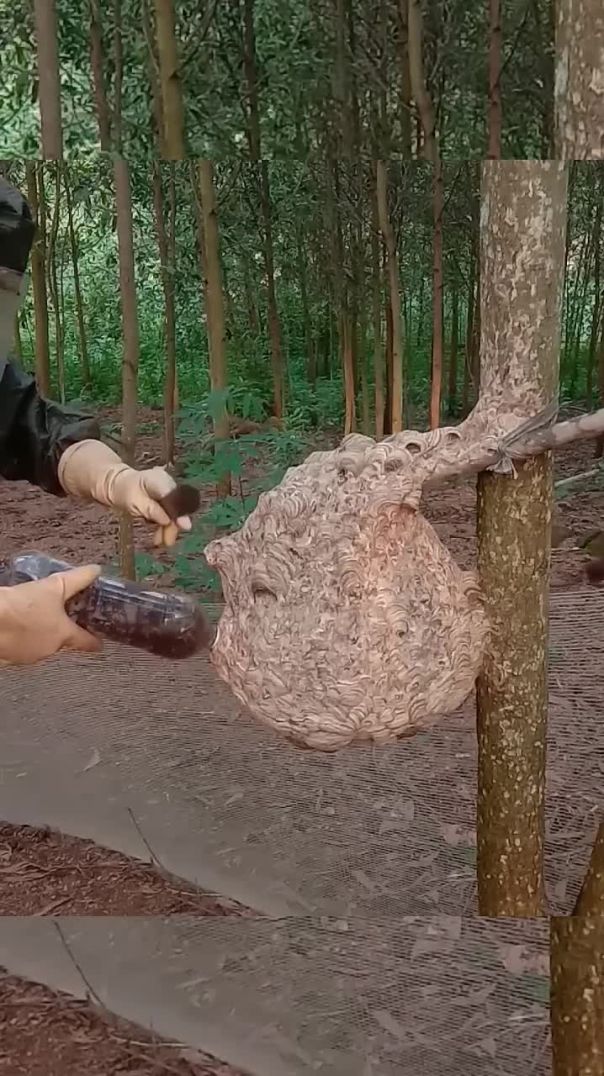800 Views· 29 May 2024
Olive Oil Making Process | Modern Olive Harvesting Technology | How Olive Oil Is Made
The process of making olive oil combines traditional methods with modern technology to produce high-quality oil. Here's a detailed look at the steps involved in the olive oil production process, from harvesting to bottling:
### 1. **Harvesting Olives:**
- **Timing:** The timing of the harvest is crucial. Olives are typically harvested in the fall when they reach their peak ripeness, which is determined by their color and oil content.
- **Methods:**
- **Traditional Hand-Picking:** Workers use rakes and hands to collect olives, which is gentle on the fruit and trees but labor-intensive.
- **Mechanical Harvesting:** Modern technology involves the use of tree shakers and mechanical harvesters that vibrate the trees, causing the olives to fall onto nets or collection belts. This method is more efficient and less time-consuming.
### 2. **Cleaning and Washing:**
- Once harvested, olives are transported to the mill and placed in a hopper.
- They are then cleaned to remove leaves, twigs, and dirt using a series of air blowers and washing machines.
### 3. **Crushing:**
- The cleaned olives are crushed to break the cell walls and release the oil.
- **Traditional Method:** Stone mills were traditionally used to crush the olives.
- **Modern Method:** Today, most producers use hammer mills or metal crushers that can process large quantities quickly and efficiently.
### 4. **Malaxing:**
- The olive paste is then slowly churned in a process called malaxation. This step allows small oil droplets to merge into larger ones.
- Malaxing usually takes about 20 to 40 minutes at a controlled temperature (typically below 27°C or 80°F) to preserve the oil's quality and aroma.
### 5. **Separation:**
- The mixture of oil, water, and olive solids is then separated.
- **Traditional Method:** In the past, olive paste was spread on mats and pressed using hydraulic presses to extract the liquid.
- **Modern Method:** Most modern facilities use centrifugation. The paste is spun at high speeds in a horizontal decanter centrifuge, which separates the oil from water and solids due to their different densities.
### 6. **Final Extraction:**
- The oil is often passed through a vertical centrifuge to remove any remaining water and impurities.
- Some producers also use filters to further refine the oil, ensuring it is clear and free of sediment.
### 7. **Storage:**
- The freshly extracted olive oil is stored in stainless steel tanks to protect it from light, air, and heat, which can degrade the quality.
- These tanks are often kept in temperature-controlled environments to maintain the oil's freshness.
### 8. **Bottling:**
- The oil is then bottled, typically in dark glass bottles or tin cans to protect it from light.
- It is labeled with important information such as the harvest date, type of olives used, and any certification (like organic or extra virgin status).
### 9. **Quality Control:**
- Throughout the process, quality control measures are implemented to ensure the oil meets certain standards.
- This includes testing for acidity levels, flavor profiles, and the presence of any defects.
### Modern Olive Harvesting Technology:
- **Drones and Sensors:** Some advanced farms use drones and sensors to monitor olive groves, assess tree health, and determine the optimal time for harvesting.
- **Automated Harvesters:** Modern automated harvesters can shake trees and collect olives more efficiently, reducing labor costs and time.
### Benefits of Modern Technology:
- **Efficiency:** Modern machines can harvest large areas quickly, ensuring olives are processed at their peak freshness.
- **Consistency:** Advanced crushing and separation technologies produce consistent quality and maximize oil yield.
- **Quality Preservation:** Temperature-controlled malaxation and storage tanks help maintain the oil's quality and extend its shelf life.
In conclusion, the combination of traditional methods and modern technology in olive oil production allows for efficient harvesting, high-quality oil extraction, and preservation of the oil's natural flavors and health benefits.



























0 Comments